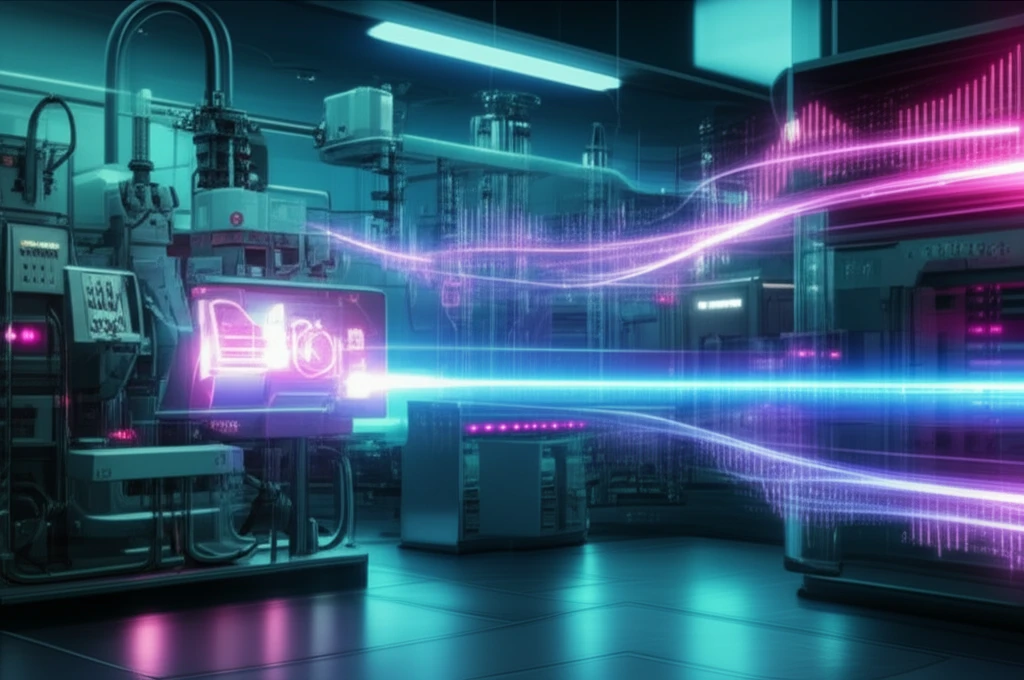
Revolutionizing Pharmaceuticals: How NIR Spectroscopy Is Transforming Drug Manufacturing
"Unveiling the Power of Near-Infrared Spectroscopy in Monitoring and Enhancing Hot Melt Extrusion for Pharmaceutical Excellence"
In the dynamic world of pharmaceuticals, innovation is constant, and the pressure to deliver effective, safe drugs is relentless. One of the most critical aspects of this process is drug formulation, where the goal is to optimize the bioavailability and efficacy of active pharmaceutical ingredients (APIs). Traditional methods often face challenges related to solubility and consistency. However, a revolutionary technique, hot melt extrusion (HME), coupled with near-infrared (NIR) spectroscopy, is changing the game.
This article explores how HME, a continuous manufacturing process, is enhanced by NIR spectroscopy. We'll delve into the advantages of HME, such as improved solubility, bioavailability, and consistent product quality. Furthermore, we will examine how NIR spectroscopy provides real-time monitoring and control during the HME process, offering insights into blend uniformity and the impact of various processing parameters.
This technological convergence is not merely about efficiency; it's about ensuring patient safety and the effectiveness of medications. As we progress, the use of NIR spectroscopy in HME is paving the way for better, more reliable pharmaceutical manufacturing processes.
The Alchemy of Hot Melt Extrusion (HME): A Deep Dive

Hot melt extrusion (HME) is a cutting-edge technique that combines drugs with thermoplastic polymers at elevated temperatures, typically between 50°C and 180°C. The process involves an extruder, which is equipped with sections designed for melting, mixing, sequential addition, and vacuum venting. This method is gaining popularity due to its ability to address critical formulation challenges.
- Enhanced Solubility and Bioavailability: HME significantly improves the solubility and bioavailability of APIs, thereby reducing dosing intervals.
- Taste Masking: This technology allows for the effective masking of APIs' unpleasant tastes.
- Batch-to-Batch Consistency: HME is a continuous process that minimizes variability, providing consistent quality.
- Cost-Effectiveness: HME reduces manufacturing costs through fewer operational steps and smaller material volumes.
- Thermodynamic Stability: It creates thermodynamically stable solid solutions, enhancing the product's mechanical and temperature stability.
- Real-Time Monitoring: HME is amenable to in-line monitoring, allowing for real-time process adjustments.
The Future of Drug Manufacturing: A New Era of Precision and Efficiency
As the pharmaceutical industry advances, the combination of hot melt extrusion and NIR spectroscopy represents a major step forward. This technology not only enhances the effectiveness and safety of drugs but also streamlines the manufacturing process, making it more efficient and cost-effective. The integration of NIR spectroscopy provides real-time insights, allowing for immediate adjustments and ensuring the consistent delivery of high-quality pharmaceutical products. This innovative approach is set to transform the industry, leading to a future where drug development is more precise, reliable, and patient-focused.
